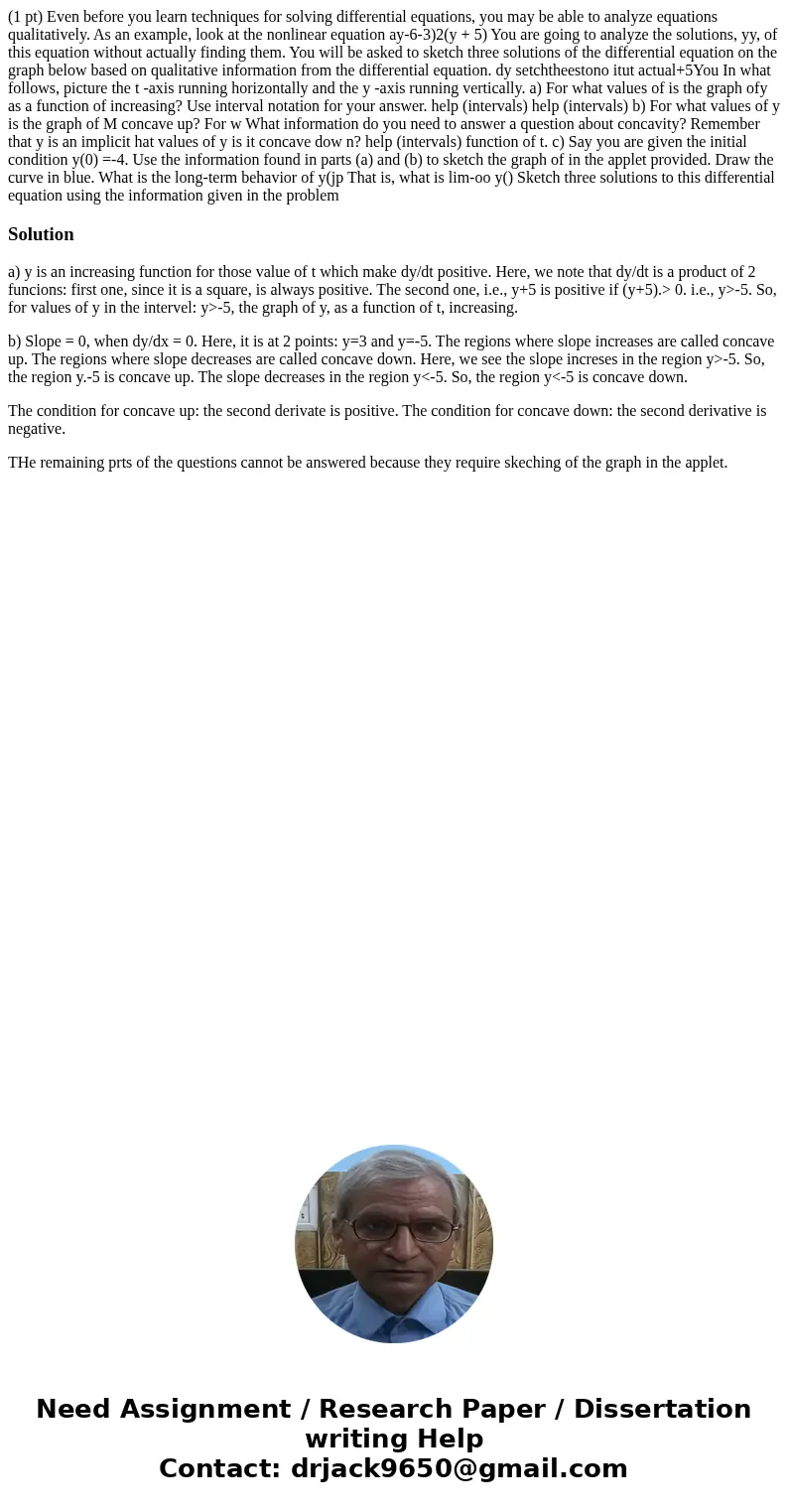(1 pt) Even before you learn techniques for solving differential equations, you may be able to analyze equations qualitatively. As an example, look at the nonlinear equation ay-6-3)2(y + 5) You are going to analyze the solutions, yy, of this equation without actually finding them. You will be asked to sketch three solutions of the differential equation on the graph below based on qualitative information from the differential equation. dy setchtheestono itut actual+5You In what follows, picture the t -axis running horizontally and the y -axis running vertically. a) For what values of is the graph ofy as a function of increasing? Use interval notation for your answer. help (intervals) help (intervals) b) For what values of y is the graph of M concave up? For w What information do you need to answer a question about concavity? Remember that y is an implicit hat values of y is it concave dow n? help (intervals) function of t. c) Say you are given the initial condition y(0) =-4. Use the information found in parts (a) and (b) to sketch the graph of in the applet provided. Draw the curve in blue. What is the long-term behavior of y(jp That is, what is lim-oo y() Sketch three solutions to this differential equation using the information given in the problem
a) y is an increasing function for those value of t which make dy/dt positive. Here, we note that dy/dt is a product of 2 funcions: first one, since it is a square, is always positive. The second one, i.e., y+5 is positive if (y+5).> 0. i.e., y>-5. So, for values of y in the intervel: y>-5, the graph of y, as a function of t, increasing.
b) Slope = 0, when dy/dx = 0. Here, it is at 2 points: y=3 and y=-5. The regions where slope increases are called concave up. The regions where slope decreases are called concave down. Here, we see the slope increses in the region y>-5. So, the region y.-5 is concave up. The slope decreases in the region y<-5. So, the region y<-5 is concave down.
The condition for concave up: the second derivate is positive. The condition for concave down: the second derivative is negative.
THe remaining prts of the questions cannot be answered because they require skeching of the graph in the applet.

 Homework Sourse
Homework Sourse